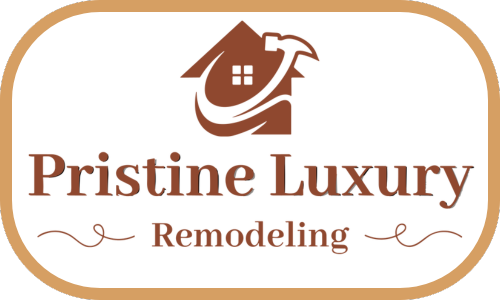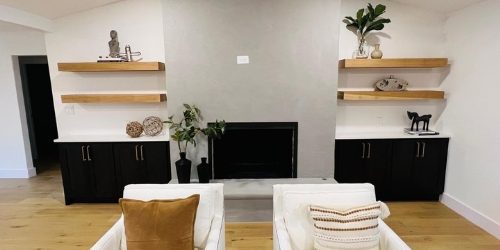A well-insulated home is essential for both comfort and energy efficiency. Proper insulation helps regulate indoor temperatures, reduces energy bills, and contributes to a quieter living environment. Whether you’re in an older house or a newer one, enhancing insulation can yield significant benefits.
Adding insulation to your home can lead to substantial savings on heating and cooling costs. The average homeowner can save approximately 15% on energy bills by insulating attics, crawl spaces, and basement rim joists, translating to about $200 per year.
Insulating Doors and Windows
Weatherstripping Techniques
Self-adhesive weatherstrips are easy to install and highly effective for sealing gaps around doors and windows, providing an immediate solution to prevent drafts and improve energy efficiency. V-strip weatherstrips are ideal for sliding windows and doors, as they create a tight seal that moves with the door or window, maintaining a barrier against air infiltration. Additionally, installing sweeps at the bottom of doors and thresholds can significantly reduce drafts by sealing the gap between the door and the floor, enhancing overall comfort and energy savings. These simple yet effective measures can improve your home’s insulation, reduce energy costs, and enhance indoor comfort.
Double-Glazed Windows
Double-glazed, or insulated, windows offer significant benefits by featuring two panes of glass separated by a layer of air or gas, which improves energy efficiency by providing better insulation, reduces noise, and enhances overall comfort by maintaining consistent indoor temperatures and reducing drafts. There are various types to choose from, including standard double-glazed windows, low-E (low-emissivity) coatings that reflect heat for additional energy efficiency, and gas-filled options where the space between the panes is filled with inert gas like argon for superior insulation. Selecting the right type depends on specific needs and climate considerations, but all options contribute to improved energy savings, noise reduction, and comfort.
Window Coverings
Thick, lined curtains and drapes offer excellent insulation by retaining warmth when closed at night, making them a practical and stylish option for improving energy efficiency. Cellular shades, with their honeycomb-shaped design, trap air to provide additional insulation, effectively reducing heat loss in winter and keeping interiors cool in summer. Applying low-E window films to windows can further enhance insulation by reducing heat transfer, thereby contributing to a more energy-efficient and comfortable living environment. These window treatments and enhancements collectively help maintain a stable indoor temperature, reduce energy costs, and increase overall comfort.
Insulation and HVAC Systems
Duct Insulation
Sealing and insulating ducts is crucial for energy efficiency, as leaky ducts can waste a significant amount of energy. To address this, seal joints with mastic or foil tape to prevent air leaks, and insulate exposed ducts to maintain temperature control. Suitable duct insulation materials include fiberglass or foam board insulation, both of which provide effective thermal barriers. By properly sealing and insulating your ducts, you can reduce energy loss, lower utility bills, and improve overall home comfort.
Insulating Around HVAC Units
For attic HVAC units, insulating around the unit is essential to prevent heat loss or gain, which helps maintain energy efficiency and optimal performance. Similarly, for basement HVAC units, it is important to insulate the area around the unit and seal any gaps to ensure that the system operates efficiently and minimizes energy waste. Proper insulation and sealing around HVAC units in both attic and basement locations contribute to better temperature control, reduced energy consumption, and improved overall comfort in the home.
Programmable Thermostats
Programmable thermostats offer the benefit of allowing you to set different temperatures for various times of the day, optimizing both comfort and energy savings by ensuring your heating and cooling systems operate only when needed. To install a programmable thermostat, follow the manufacturer’s instructions carefully to ensure proper setup and functionality. If unsure, consider hiring a professional to ensure the thermostat is correctly installed and integrated with your HVAC system, maximizing its efficiency and benefits.
Types of Insulation
Fiberglass
Fiberglass insulation is a widely used and cost-effective solution for improving energy efficiency in homes. Its popularity stems from its affordability and effectiveness in providing thermal insulation. Available in various forms, such as batts, rolls, and loose-fill, fiberglass can be used to insulate walls, attics, ducts, and HVAC units. It is made from fine glass fibers, which trap air and create a barrier that slows the transfer of heat, helping to maintain consistent indoor temperatures. This not only reduces energy costs by minimizing the need for heating and cooling but also enhances overall comfort by preventing drafts and maintaining a more stable indoor environment.
Cellulose
Cellulose insulation, made from recycled paper products, is an eco-friendly and effective option for insulating existing walls. This material is known for its excellent thermal performance and ability to reduce air leakage. It is particularly well-suited for retrofitting older homes, as it can be blown into wall cavities and other spaces without major disruption home. Cellulose insulation helps maintain consistent indoor temperatures by creating a dense barrier that minimizes heat transfer and improves energy efficiency.
Mineral Wool
Mineral wool, also known as rock wool or slag wool, is renowned for its fire-resistant and sound-absorbing properties. Made from natural rock or industrial slag that is melted and spun into fibers, mineral wool offers exceptional thermal insulation while providing a high level of fire resistance, helping to contain flames and prevent the spread of fire within a building. Its dense structure also makes it highly effective at absorbing sound, reducing noise transmission between rooms and creating a quieter indoor environment. Additionally, mineral wool is resistant to moisture and does not support mold growth, adding an extra layer of durability and health benefits.
DIY Insulation Tips
Sealing Air Leaks
Sealing air leaks is crucial for preventing drafts and enhancing the effectiveness of insulation. Proper air sealing involves identifying and addressing gaps, cracks, and openings around windows, doors, and other entry points where air can escape or enter. By effectively sealing these leaks, you can significantly reduce unwanted heat loss or gain, which improves overall energy efficiency and comfort. This process not only prevents drafts that can make indoor spaces uncomfortable but also helps to maintain consistent temperatures, reducing the workload on heating and cooling systems and ultimately lowering energy bills.
Weatherstripping Doors and Windows
Weatherstripping doors and windows is an effective method for addressing gaps and minimizing heat loss. By applying weatherstripping materials to the edges of doors and windows, you can create a tight seal that prevents drafts and air leaks. This helps to maintain a consistent indoor temperature, reducing the need for excessive heating or cooling and enhancing overall energy efficiency. Weatherstripping is a cost-effective solution that not only improves comfort by eliminating cold spots and drafts but also contributes to lower energy bills by reducing the amount of conditioned air that escapes from the home.
Insulating Pipes and Ducts
Insulating pipes and ducts is a key measure to prevent energy loss and improve overall efficiency in your home. By wrapping exposed pipes and ducts with insulation materials, such as foam or fiberglass sleeves, you can minimize heat loss or gain as the air travels through them. This is particularly important for pipes carrying hot or cold fluids, as well as ducts that transport heated or cooled air. Proper insulation helps maintain the temperature of the fluids or air, reducing the strain on your heating and cooling systems and improving energy efficiency.
Common Questions
Q1 How much insulation do I need?
A1 It depends on your climate zone. Consult the Department of Energy’s guidelines.
Q2 Can I install insulation myself?
A2 DIY installation is possible, but professional help ensures optimal results.
Q3 What about moisture control?
A3 Proper ventilation and moisture barriers are crucial.
Impact of Insulation on Heat Pumps
Discuss how improved insulation reduces the workload on heat pumps, leading to better performance and energy savings.
Seeking Expert Advice
Encourage readers to consult insulation professionals for personalized recommendations and installation.
Conclusion
Incorporating effective insulation strategies into your home can significantly enhance comfort, reduce energy bills, and contribute to a more sustainable lifestyle. By addressing air leaks, upgrading to energy-efficient windows, and insulating HVAC systems, you create a more energy-efficient environment that maintains consistent temperatures and reduces heating and cooling costs. These efforts not only improve your home’s overall comfort but also help to lower your carbon footprint. It’s important to seek professional advice when undertaking major insulation projects to ensure proper installation and maximize the benefits. Embracing these insulation practices will lead to long-term savings and a more comfortable living space, allowing you to enjoy the benefits of a well-insulated home.
Visit us at Pristine Luxury Remodeling
For more information and personalized guidance visit us at Pristine Luxury Remodeling, We specialize in providing exceptional remodeling services that elevate your space into a masterpiece of luxury.







